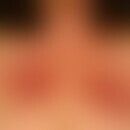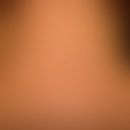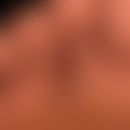Synonym(s)
Scarification test
DefinitionThis section has been translated automatically.
Test for the diagnosis of an IgE-mediated allergic reaction of the immediate type ( type I allergy) with native allergens (drugs, foods, occupational substances, etc.) on the skin; to be performed in case of a negative or doubtful rubbing test and, if necessary, before the prick test or intradermal test is performed.
ImplementationThis section has been translated automatically.
Methods: The native allergens usually brought along by the patient are first crushed and dissolved in a test vehicle (water, glycerine or alcohol). After applying these produced allergen solutions to the skin on the forearm flexion side (less often on the back), the skin is slightly incised with a blood lancet or scratch needle without causing bleeding. A positive control (0.1% Histamine Lsg.) and a negative control (0.9% NaCl Lsg.) should be tested to exclude false negative and false positive reactions. The urticarial reaction is read after 20 minutes. According to the diameter of the wheal and reflex erythema in comparison to the positive and negative control, the respective test reactions are evaluated semi-quantitatively from 0 to ++++ in analogy to the prick test.
Notice! The scratch test is usually negative, since type I sensitization (IgE) is usually directed against metabolites of the tested substances; only in case of very high type I sensitization (IgE) against the original substance the test is positive. For forensic reasons, however, the scratch test must be performed before any further testing (intradermal test and provocation test).
Note(s)This section has been translated automatically.
Local and systemic allergic type I reactions are described in extremely rare cases.
LiteratureThis section has been translated automatically.
- Ring J (1988) Applied allergology. 2nd edition. MMW Publishing House Munich



